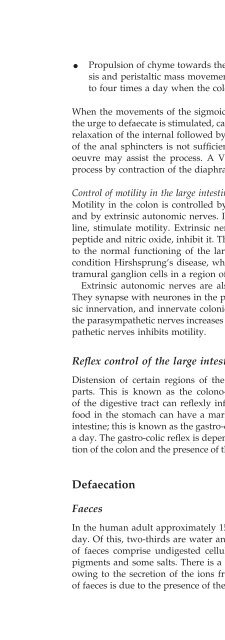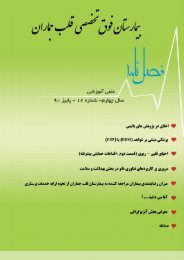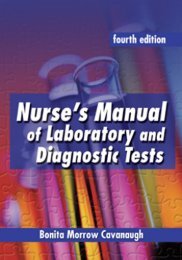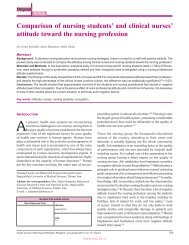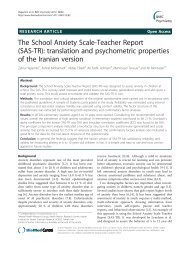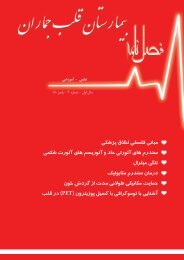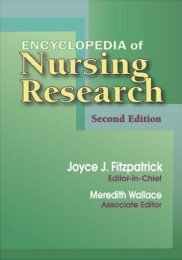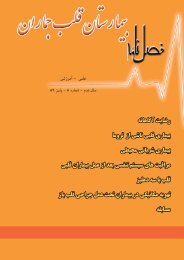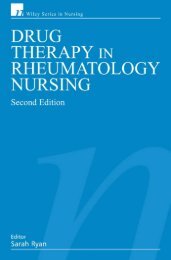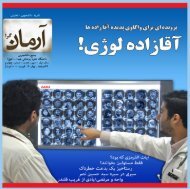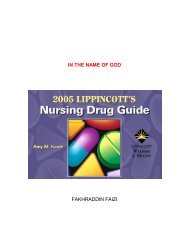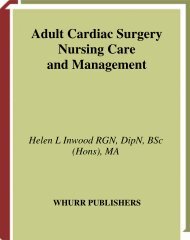Gastrointestinal Nursing.pdf
Gastrointestinal Nursing.pdf
Gastrointestinal Nursing.pdf
You also want an ePaper? Increase the reach of your titles
YUMPU automatically turns print PDFs into web optimized ePapers that Google loves.
The Large Intestine 79• Propulsion of chyme towards the anus by segmental propulsion, peristalsisand peristaltic mass movements. Spontaneous movements occur threeto four times a day when the colon is full and distended.When the movements of the sigmoid colon move the faeces into the rectum,the urge to defaecate is stimulated, causing peristaltic waves in the rectum andrelaxation of the internal followed by the external anal sphincter. If relaxationof the anal sphincters is not sufficient to allow defaecation, a Valsalva manoeuvremay assist the process. A Valsalva manoeuvre aids the defaecationprocess by contraction of the diaphragm, thoracic and abdominal muscles.Control of motility in the large intestineMotility in the colon is controlled by intrinsic nerves of the intramural plexiand by extrinsic autonomic nerves. Intrinsic nerves, which release acetylcholine,stimulate motility. Extrinsic nerves, which release vasoactive intestinalpeptide and nitric oxide, inhibit it. The importance of the intrinsic nerve plexito the normal functioning of the large intestine is illustrated by the clinicalcondition Hirshsprung’s disease, which is characterised by an absence of intramuralganglion cells in a region of the colon.Extrinsic autonomic nerves are also involved in the control of the colon.They synapse with neurones in the plexi to modulate the effects of the intrinsicinnervation, and innervate colonic smooth muscle directly. Stimulation ofthe parasympathetic nerves increases motility, whereas stimulation of the sympatheticnerves inhibits motility.Reflex control of the large intestineDistension of certain regions of the colon can result in relaxation in otherparts. This is known as the colono-colic reflex. Additionally other regionsof the digestive tract can reflexly influence colonic motility. The presence offood in the stomach can have a marked influence upon motility in the largeintestine; this is known as the gastro-colic reflex and occurs three to four timesa day. The gastro-colic reflex is dependent upon the parasympathetic innervationof the colon and the presence of the hormones gastrin and cholecystokinin.DefaecationFaecesIn the human adult approximately 150 g of faecal material is eliminated eachday. Of this, two-thirds are water and one-third solid. The solid componentsof faeces comprise undigested cellulose, intestinal bacteria, cell debris, bilepigments and some salts. There is a high content of potassium ions in faecesowing to the secretion of the ions from the colonic walls. The brown colourof faeces is due to the presence of the bile pigment stercobilinogen. The odour


